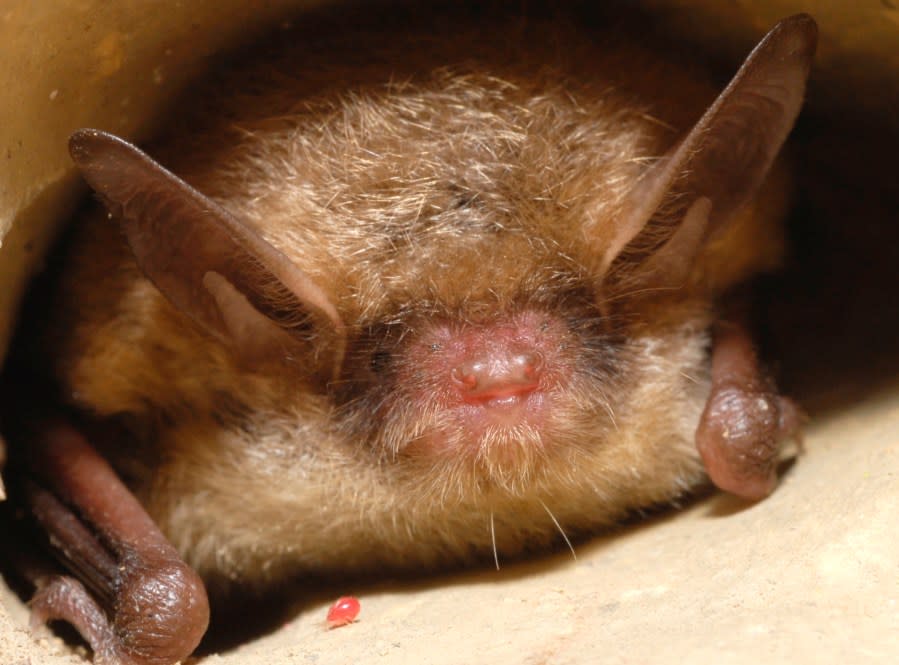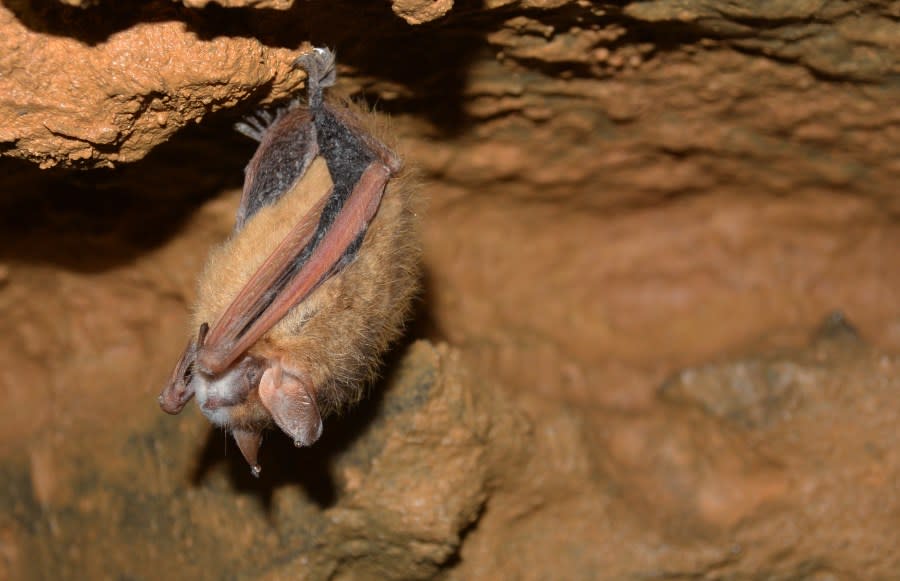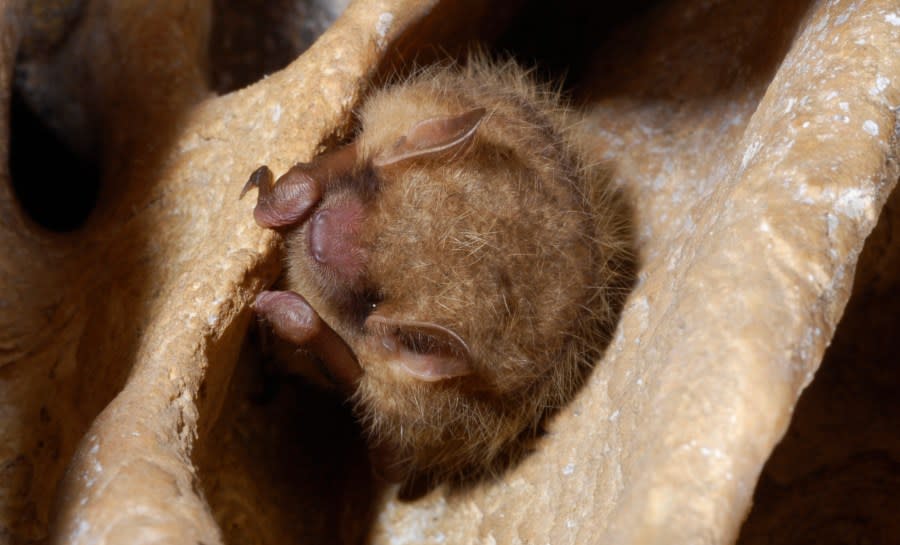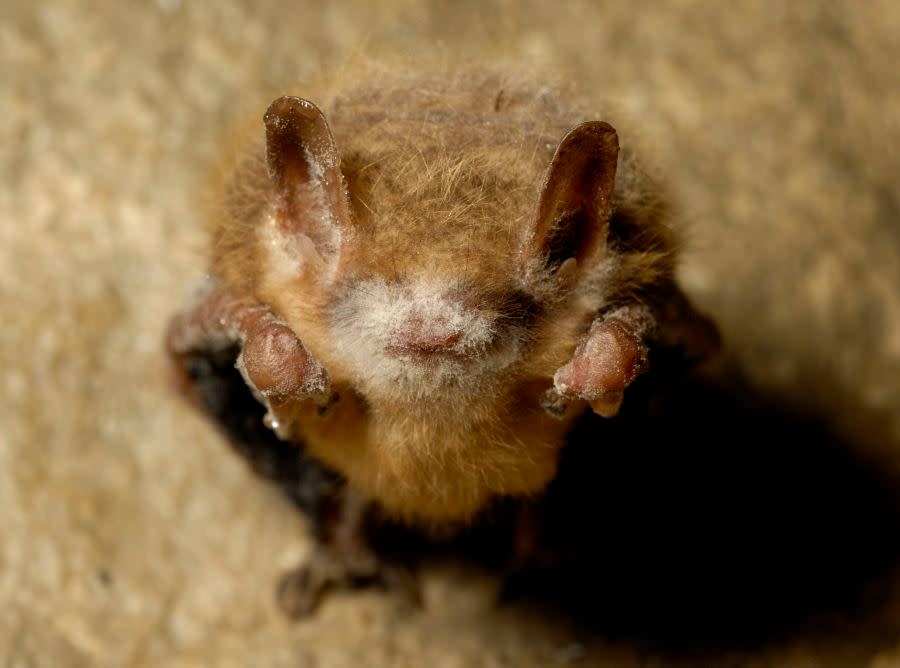White-Nose Syndrome: Fungal disease ‘almost certain death’ for some Tennessee bat colonies

NASHVILLE, Tenn. (WKRN) — While centuries of folklore and various legends have led to bats being considered creepy critters, the tiny, winged mammals are actually harmless, and play an important role as nature’s pest controllers.
But, according to biologists like Pete Pattavina with the U.S. Fish and Wildlife Service, many species of bats found within Tennessee are in trouble amid the spread of a fungal disease that, for some, means “almost certain death” when it’s contracted.
Nearly 86,000 bats found in East Tennessee cave
“White-Nose Syndrome in Tennessee is behaving very much like it has throughout the rest of the Appalachians and Midwest, so we’re seeing incredibly dramatic declines in about three or four species, which would be the species that hibernate in caves,” Pattavina said.

Biologists first saw bats sick and dying from White-Nose Syndrome in 2007 in caves near Albany, New York. However, cave explorers in that area had spotted bats with a white powder on their noses the year before, meaning the disease has been in North America since at least 2006.
Pattavina said it started spreading to Tennessee caves in 2010 and has since become a statewide issue. The number of deaths nationwide is in the millions, and in Tennessee, species like northern long-eared bats have declined by around 97% to 99%.
838 acres added to Fall Creek Falls State Park with caves home to bats, miles of streams
“It’s almost certain death for species such as northern long-eared bats, and we don’t have much evidence yet that if you survive an infection one year that you might not die the next year from the same infection,” Pattavina said.
What causes white-nose syndrome?
The disease is caused by a fungus called Pseudogymnoascus destructans, or Pd for short, that grows in cold, dark, and damp places. Typically, Pattavina said mammals are able to stave off fungal infections because most cannot survive at temperatures higher than 75 to 80 degrees.
However, when a bat goes into hibernation, its temperature comes down to about the same temperature as a cave. The fungal pathogen then attacks the bare skin of bats, causing small lesions and a white fuzz on their faces, which is how the disease got its name.

“It can be very irritating and so it causes bats to wake up more frequently than they would like to during hibernation,” Pattavina said. “A bat really has to manage its energetic resources during hibernation. It builds fat all summer and all fall to go into hibernation and a healthy state.”
Amphibians are the world’s most vulnerable animals and threats are increasing
As bats become more active than usual, they end up burning fat they need to survive the winter. Bats with White-Nose Syndrome may also do strange things like fly outside in the daytime in the winter or leave a cave earlier than normal.
In late December, January and February, Pattavina said there are no insects for them to feed on, and many starve to death. In addition to northern long-eared bats, which are listed as endangered, there are three other species experiencing dramatic declines in Tennessee.
Different impacts on different species
Indiana bats, another endangered species, little brown bats and tricolored bats are all dying at extremely high rates. One of the exceptions is the gray bat, which Pattavina said has mysteriously managed to “persist in the face of the fungal pathogen and survive white-nose syndrome.”
Five animals in TN you might not have known are endangered
Biologists are still trying to understand why gray bats don’t seem to be affected as much as other species, but Pattavina said it could be related to factors like their bulkier bodies or the sites where they choose to hibernate.

“Many of the caves gray bats choose to hibernate in are sinkholes and they become cold air traps,” he said. “So, it could be that they are hibernating at very low temperatures and the fungus doesn’t get a toehold to go into a pathogenic state.”
Some researchers have also observed behavioral changes in gray bats where they’ve shifted where they choose to roost. Pattavina said that could be a response to White-Nose Syndrome.
Where did White-Nose Syndrome come from?
While biologists haven’t ever been able to pinpoint where exactly White-Nose Syndrome came from, Pattavina said they know the fungal pathogen arrived from somewhere in Eurasia.
The fungus is widespread overseas, but he said bats in Europe and Asia have “co-evolved with it,” so it doesn’t appear to affect them as much.
Helping Hellbenders: Tennessee animal experts aim to save dwindling salamander population
“Anything that goes from cave to cave can spread the fungal pathogen and white-nose syndrome. What we see mostly in the United States is the disease being spread by bats,” Pattavina said. “So, it didn’t take very long, about five years, for White-Nose Syndrome to come from New York State, where it was first discovered, to Tennessee.”
The disease can also be spread by human contact through caving equipment, mining trucks and mining gear. Pattavina said White-Nose Syndrome has recently spread as far as the West Coast, with a large jump in cases around 2018.
Ripple effects on ecosystems and finding a cure
White-Nose Syndrome’s impact on bats also has ripple effects on various ecosystems and people’s way of life.
Looking at just the corn growing process alone, Pattavina said some studies have shown bats save the U.S. agricultural industry nearly $1 billion a year by eating pests like pickleworm moths.
Endangered animals in Tennessee: The species being monitored by U.S. Fish and Wildlife
“We’ve actually even found and tracked bats migrating with swarms of pickleworm moths from Florida,” he said. “So, they are actually following these swarms of migrating agricultural pests and feeding on them, sometimes fairly high up in altitude.”

There currently is no cure for White-Nose Syndrome, but scientists from all over the world are working together to study the disease, as well as measures that can help decontaminate sites where bats hibernate and spend most of their time.
“We’ve seen naturally occurring compounds like volatile organics, things like essential oils for instance, like spearmint oils and orange oils, actually produce an antifungal compound that the fungal pathogen is actually very sensitive to,” Pattavina said.
TWRA warns of invasive zebra mussels in aquarium products
Ultraviolet light also tends to kill the fungus, but Pattavina said there are 12,000 caves in Tennessee alone and other sensitive organisms that have to be taken into consideration.
“It’s almost impossible to decontaminate all bat roosts,” he said. “And so, we can treat them in the winter, but we also don’t want to contribute to the problem because their hibernation is such a sensitive period. So, we have to find a cure for White-Nose Syndrome.”
How you can help
Studying the resiliency of some colonies may lead to more conservation options in the future, but there are also ways the average person can help protect bats in the meantime. One way is to put up a bat house, or an artificial shelter that provides a roosting space for bats.
Certain vegetation can also be planted around homes to attract moths and other types of insects bats typically eat. In addition, Pattavina suggests becoming a citizen scientist with the Tennesse Bat Working Group and helping monitor bat colonies.
“You can count our bats because bats occur in so many places in Tennessee, there’s no way that we can monitor them all,” he said.
⏩ Read today’s top stories on wkrn.com
Cavers can join their local grotto to learn how to cave responsibly and prevent the spread of White-Nose Syndrome, and those who encounter a bat inside their home should hire a responsible nuisance wildlife coordinator to safely relocate the animal.
“There’s lots of things that the average person can do to help bats,” Pattavina said. “We’re trying to protect colonies that are doing well in addition to trying to find different types of treatment measures that we can use to treat bats themselves.”
To find out more about White-Nose Syndrome, response plans, and helping bats survive, click here.
For the latest news, weather, sports, and streaming video, head to WKRN News 2.

